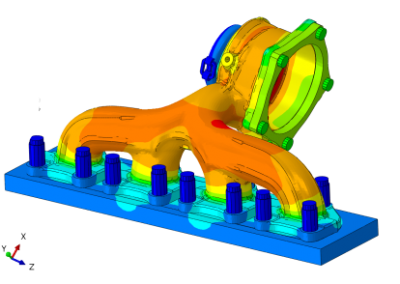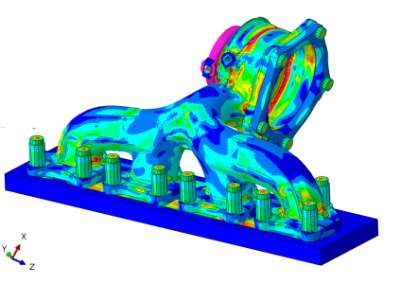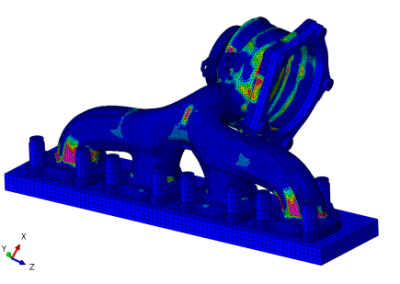
The simulation process
The simulation process is carried out by using Computer aided engineering (CAE) and incorporates the aid of computers when performing engineering related tasks and activities. With our advanced CAE software and dedicated methodologies at MTEE, we are able to virtually assess the performance and durability of our turbocharger designs by simulation.
The insights gained through simulation provide the opportunity to identify and optimize critical design parameters before expensive physical testing on gas benches or in vehicle tests. The availability of simulation within engineering significantly reduces the lead time for turbocharger development. Furthermore it minimizes the amount of physical test loops typically required during the development of turbochargers for customer application.
By applying computational fluid mechanics (CFD) in combination with a 3D model, heat transfer analysis can be made
MTEE can assess the expense in compressor performance as a result of the pipe bend within a virtual environment. Secondly, the insight gained through simulation is used to determine the optimum between packaging restrictions, piping geometry and compressor performance. As a result the final design proposal will meet the customer’s packaging requirement with a minimum drop in overall performance.
Simulation is among other things utilized to optimize the durability of turbine designs. Using computational fluid mechanics (‘CFD’) for heat transfer analysis in combination with computational solid mechanics (often designated as ‘FEM’), turbine housing design durability can be predicted quite accurately by means of simulation. The result is that turbine housing designs are optimized for durability without a significant penalty in increasing costs due to unnecessary application of high-percentage alloying elements like nickel.
Figure 2; Turbine housing durability assessment by simulation: heat transfer analysis from CFD (left), FEM analysis, stress (middle), FEM analysis, strain (right).
The success or accuracy of simulation highly depends on the combination of applied boundary conditions, quality of geometry and methodology.





